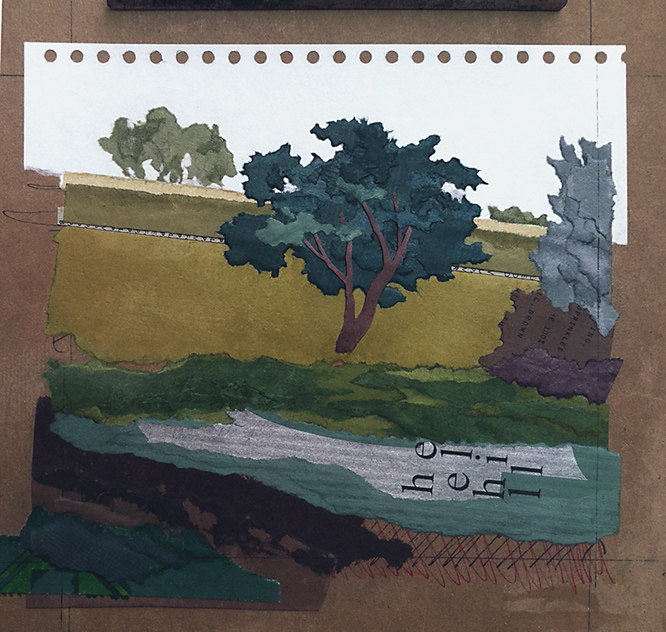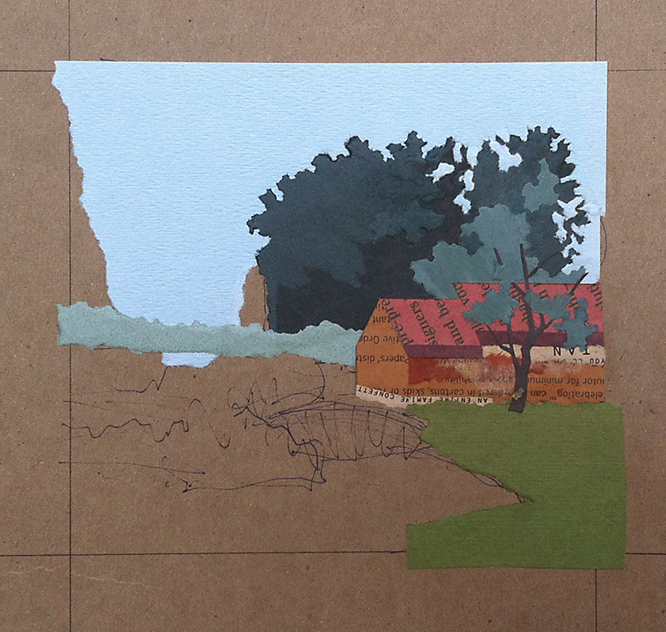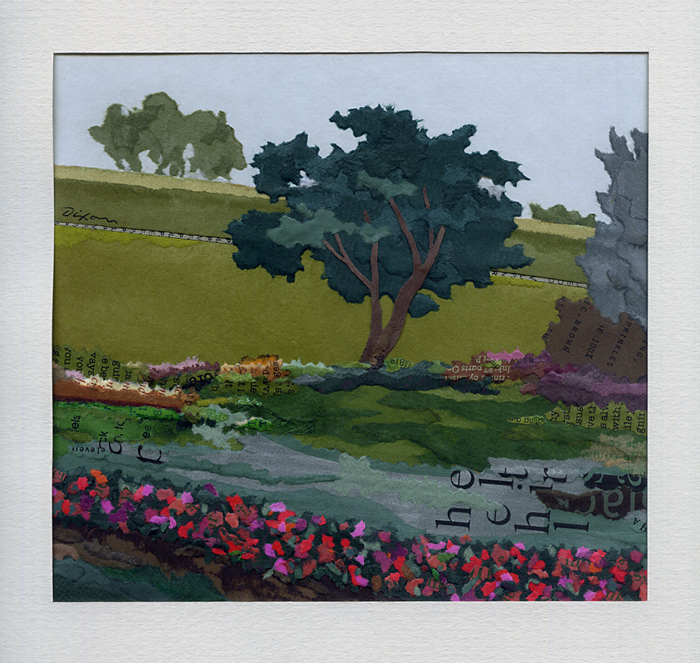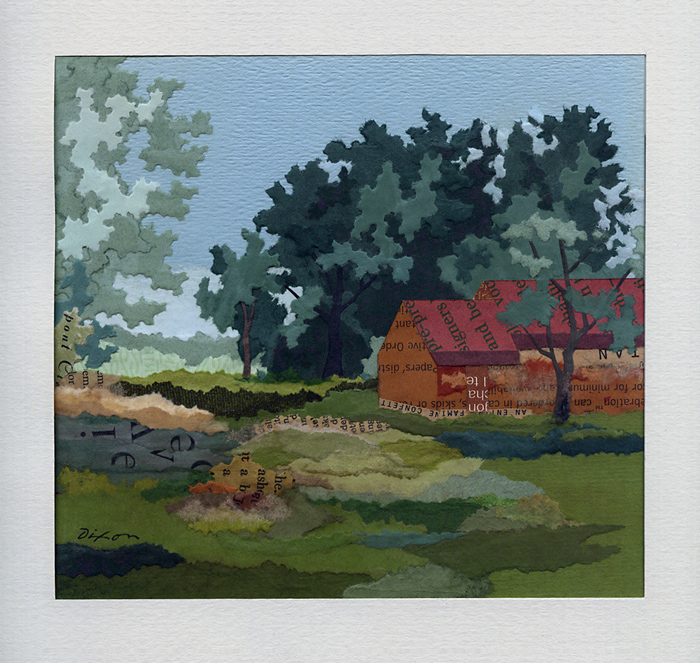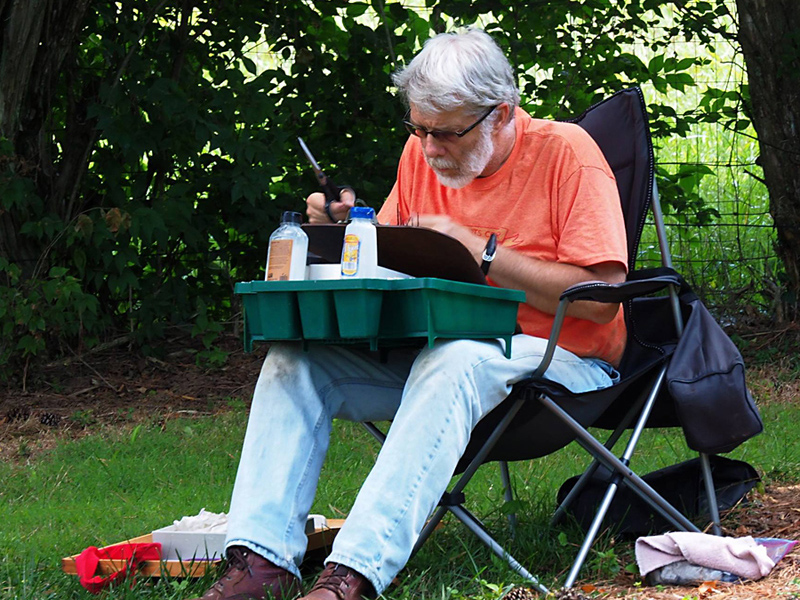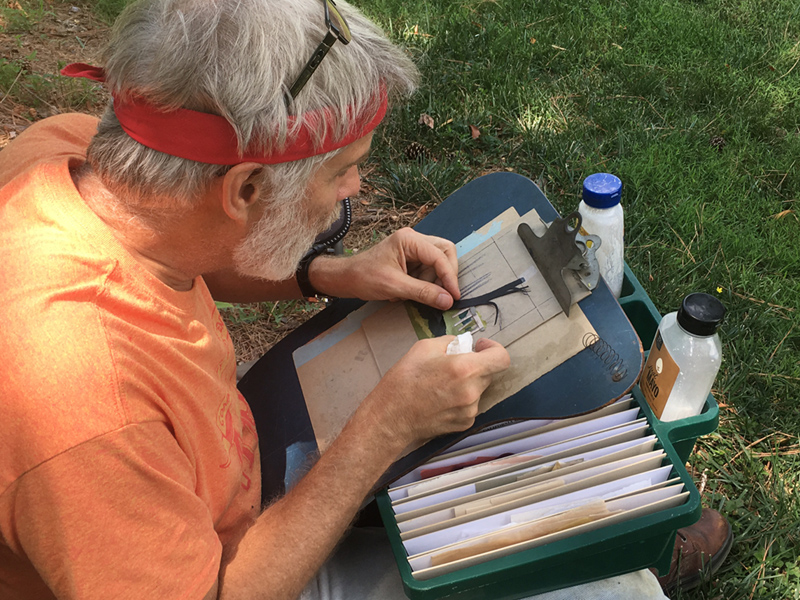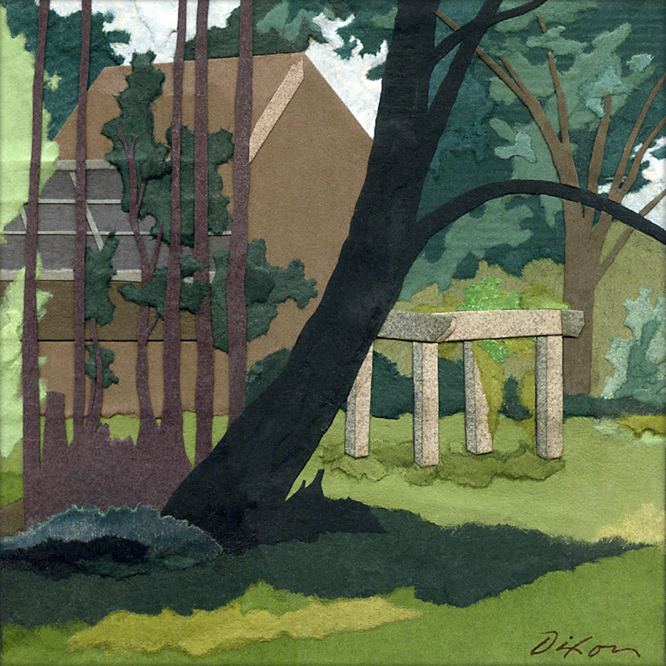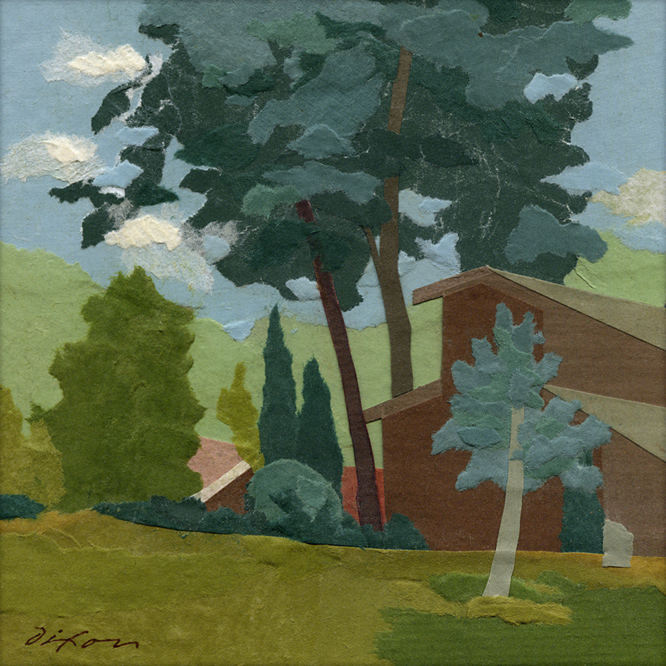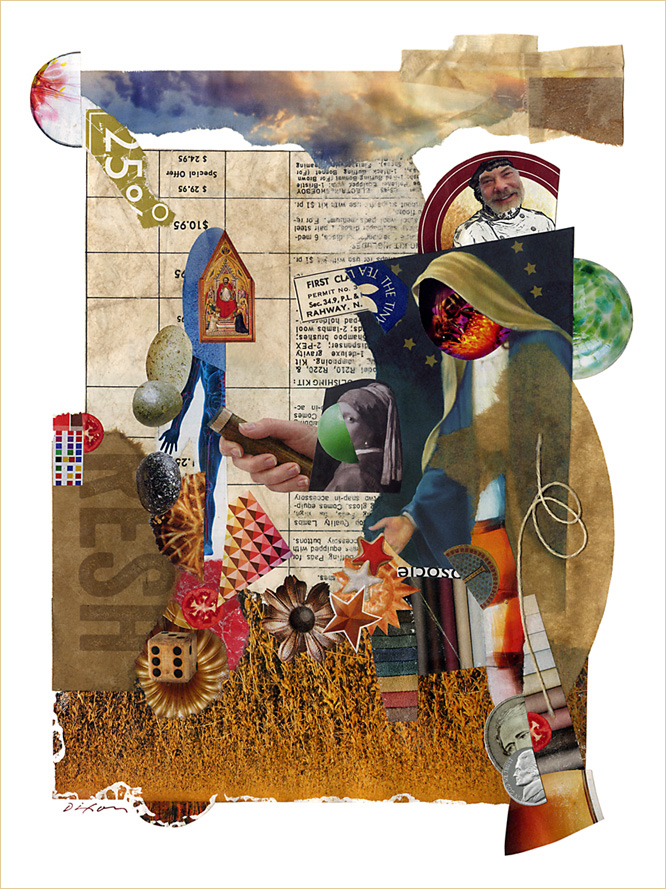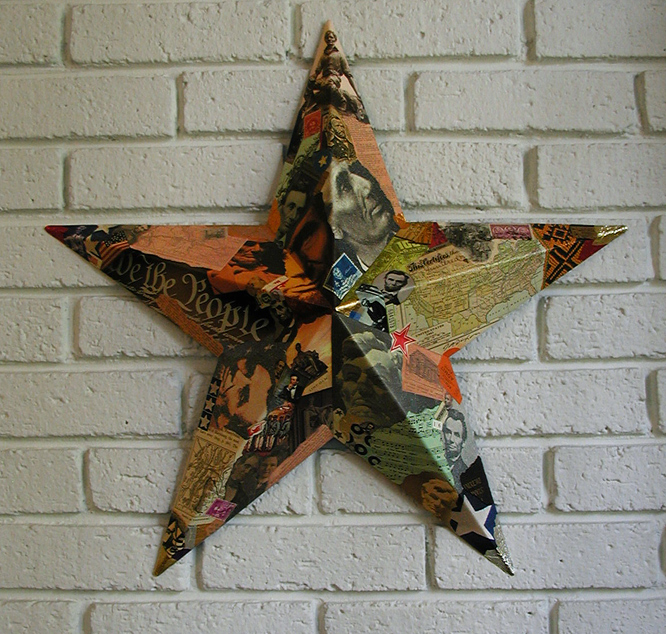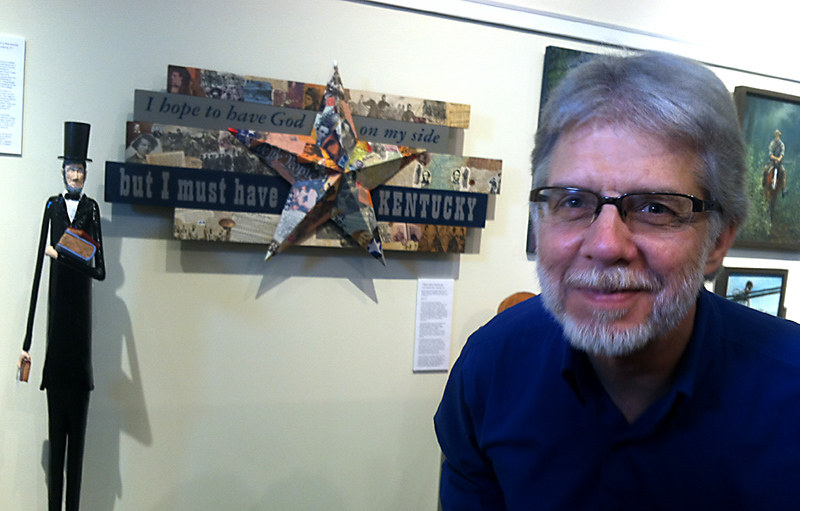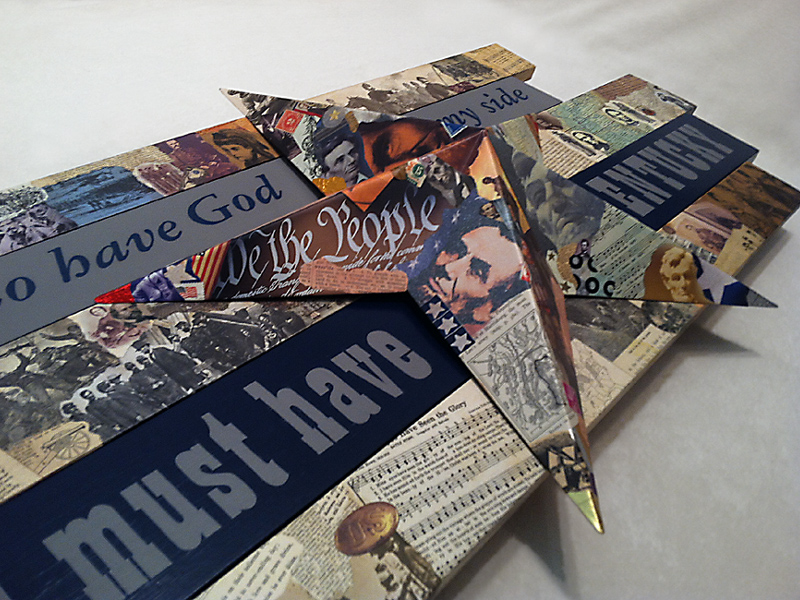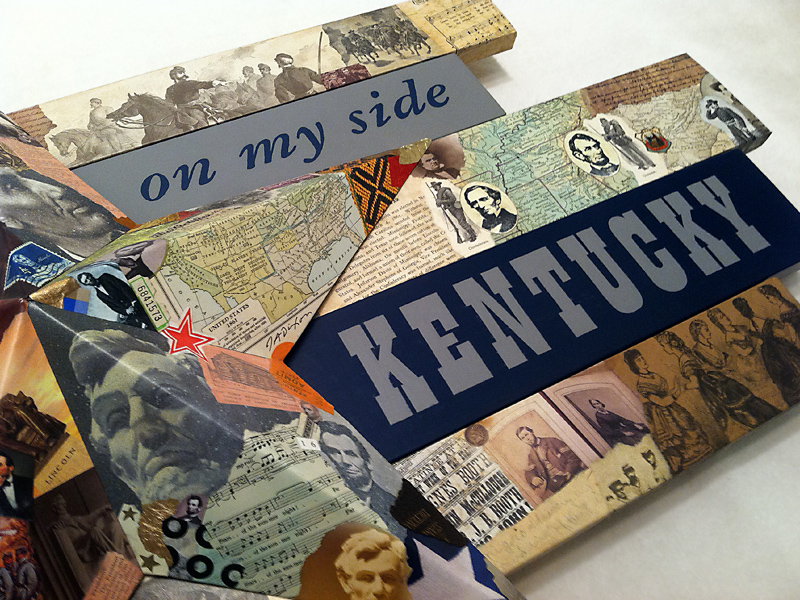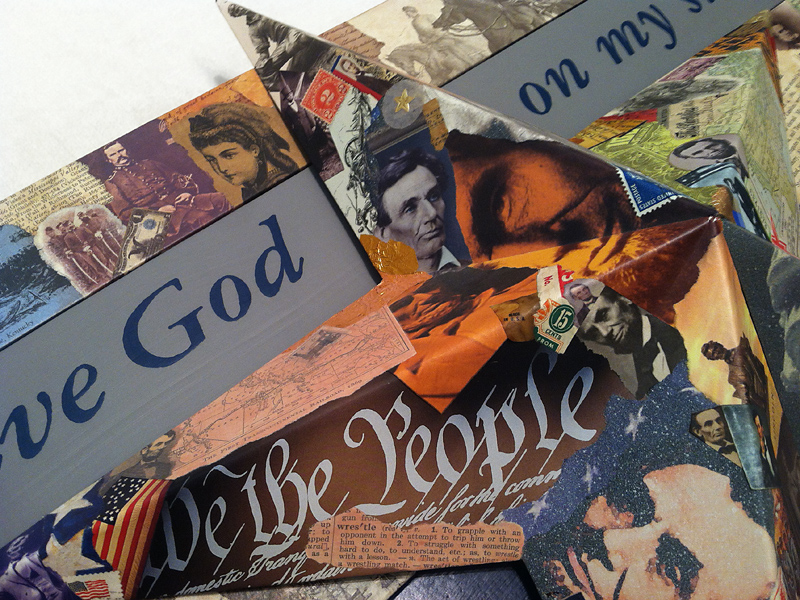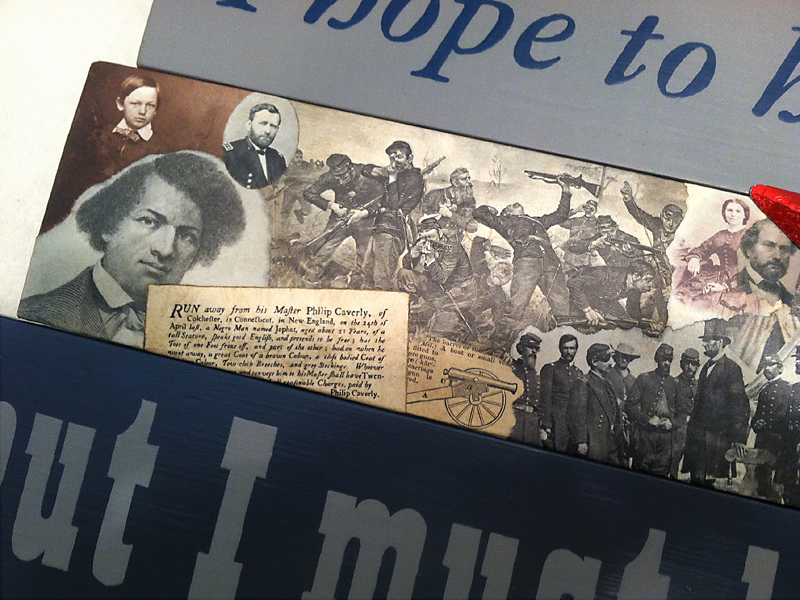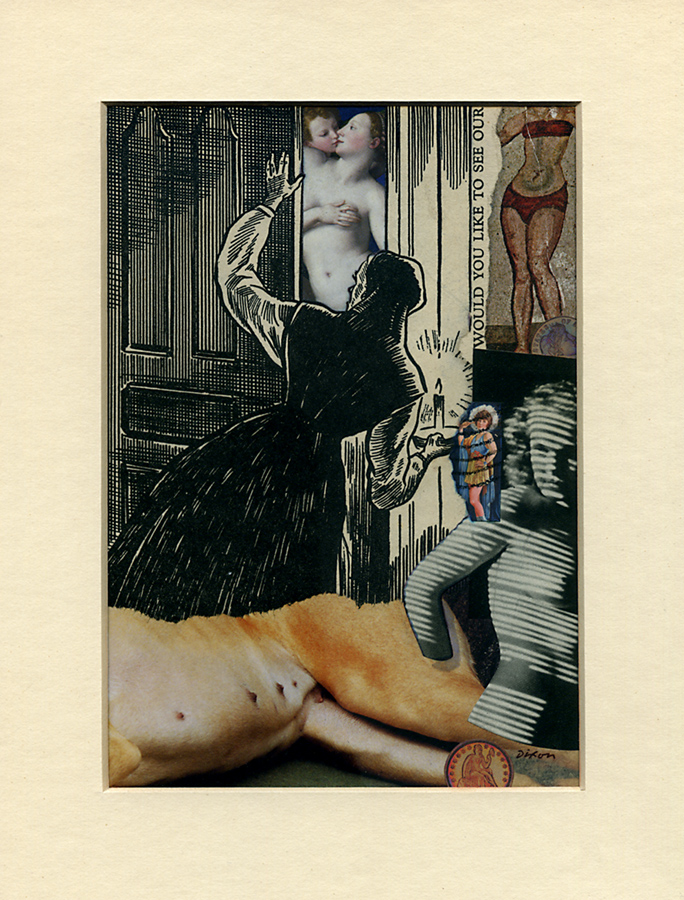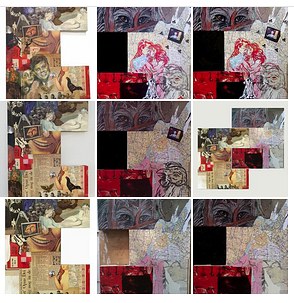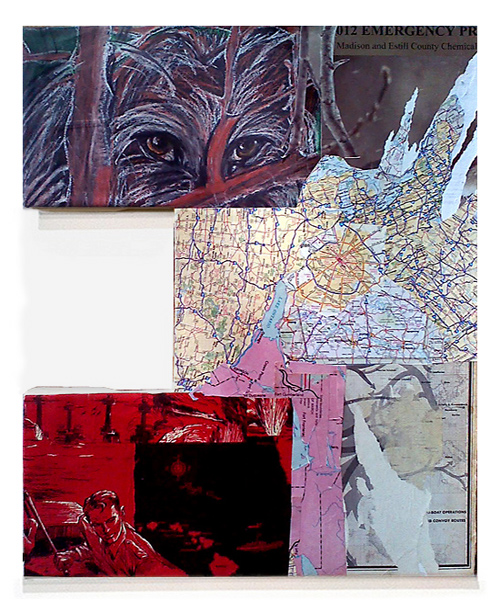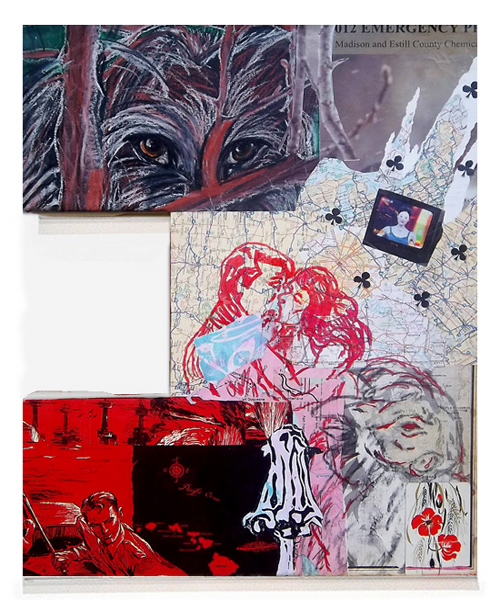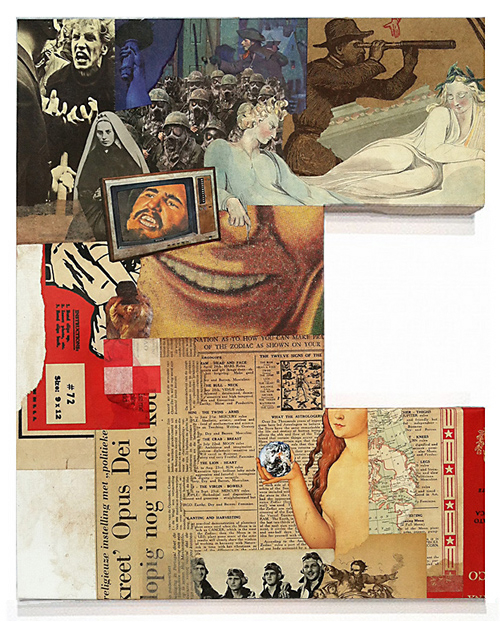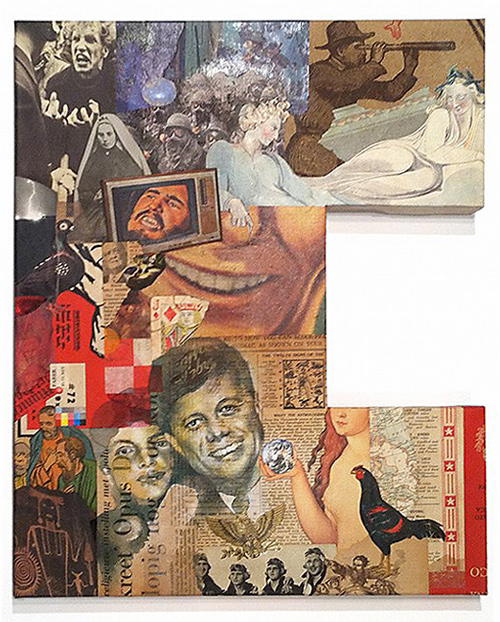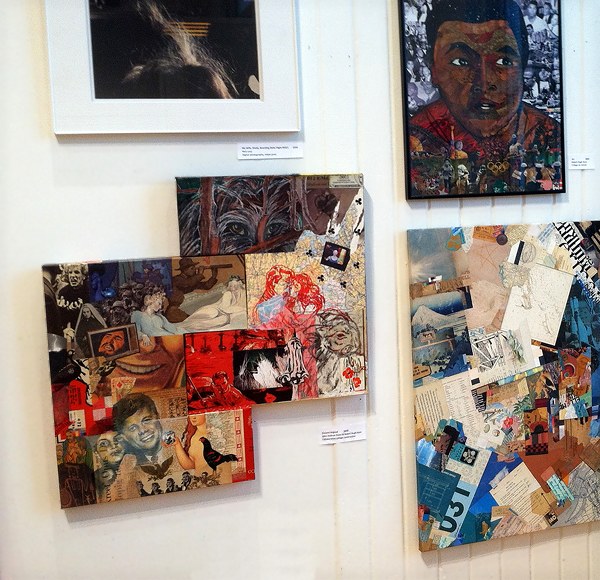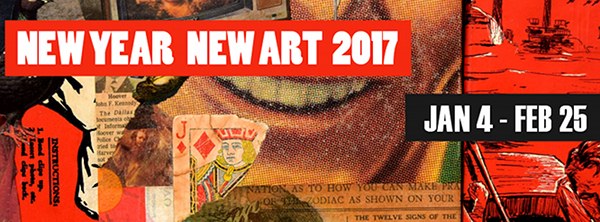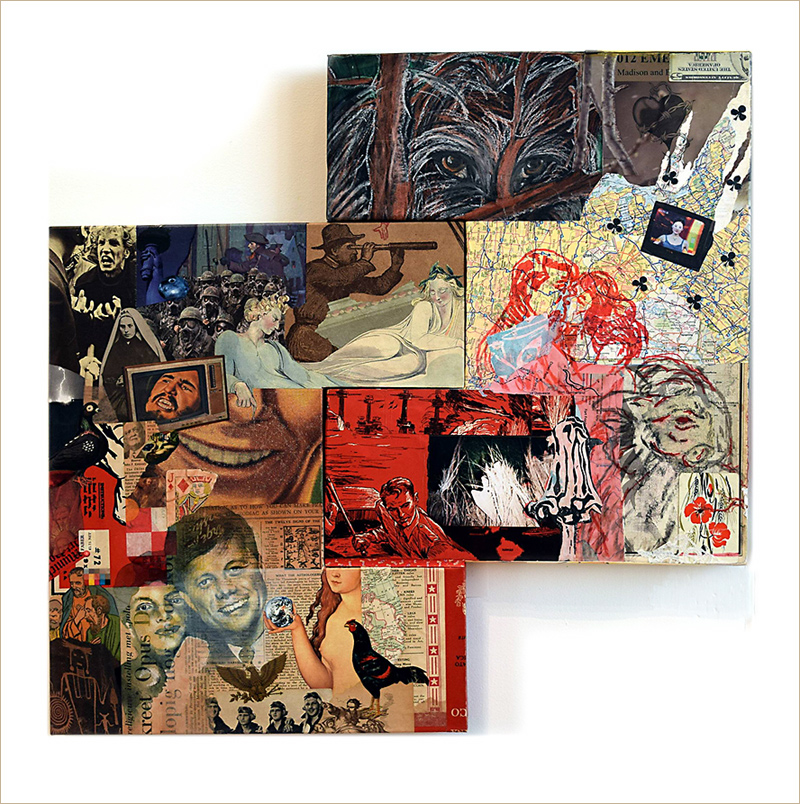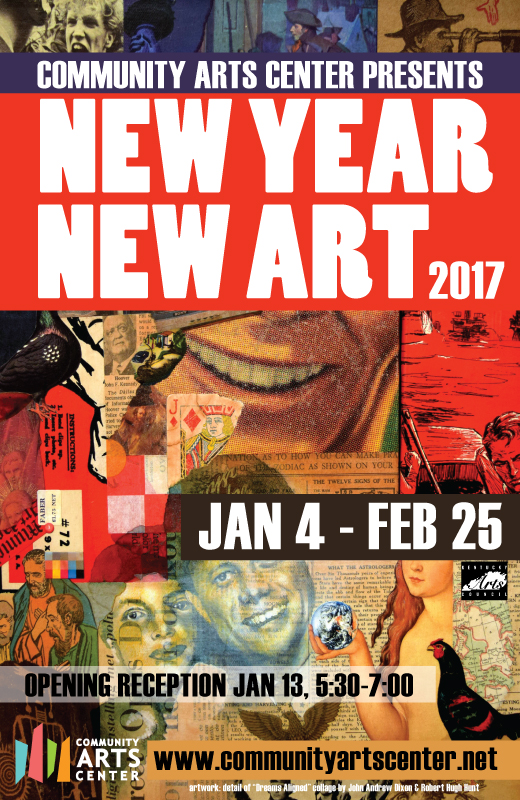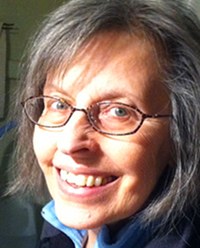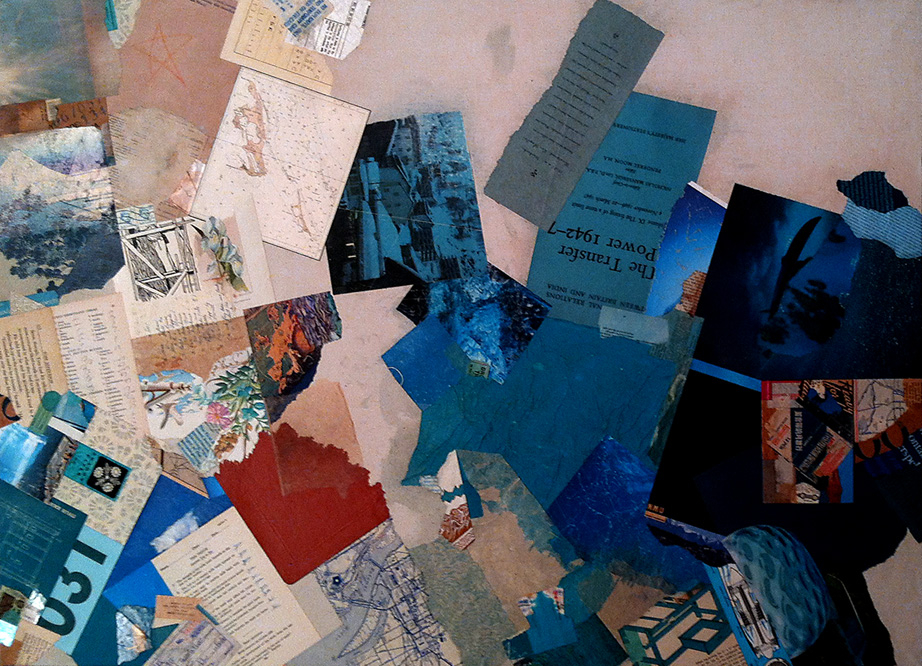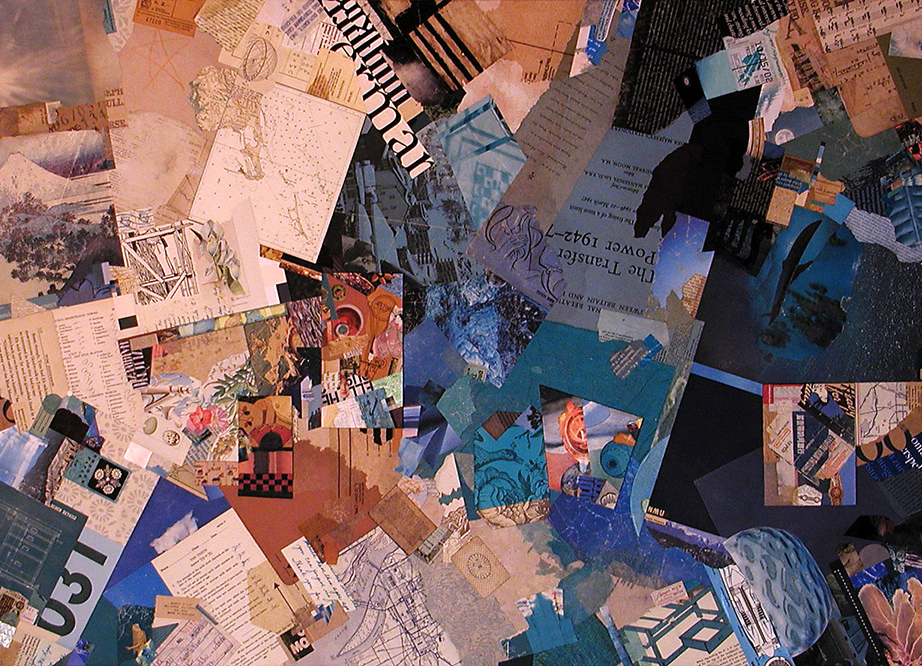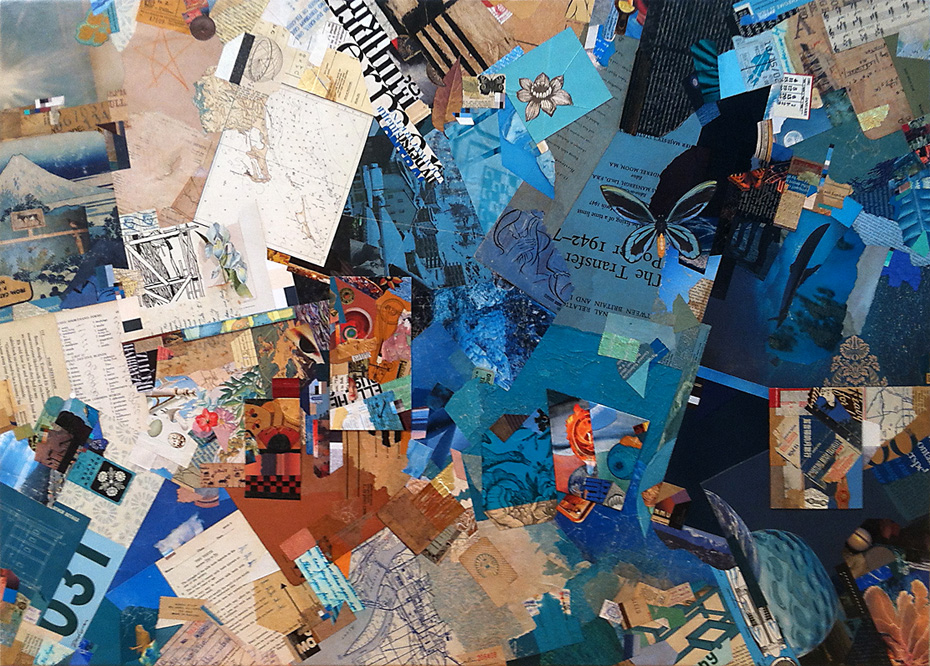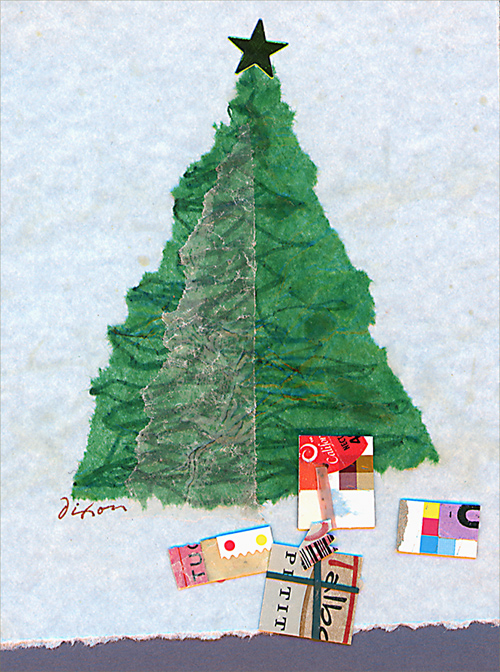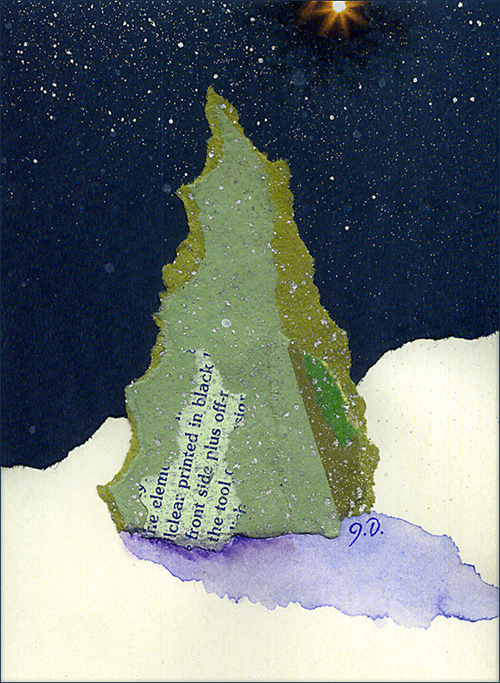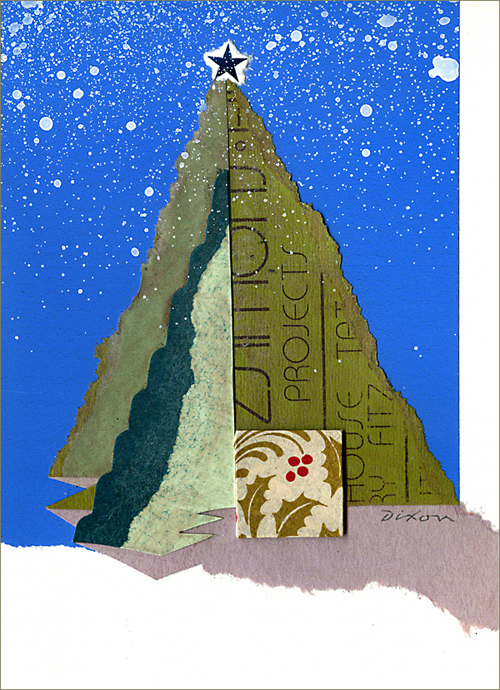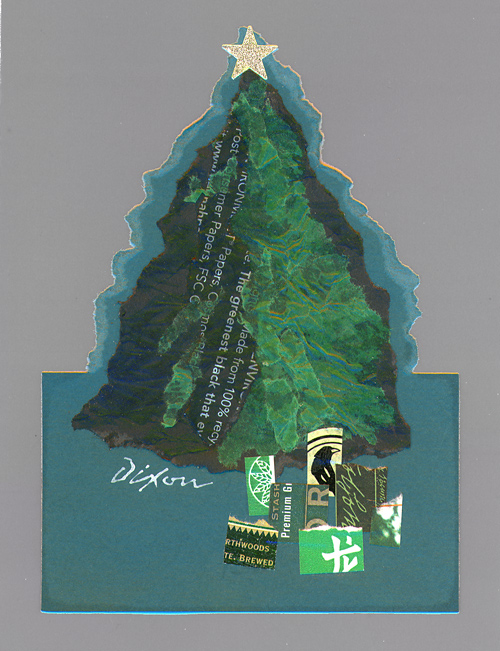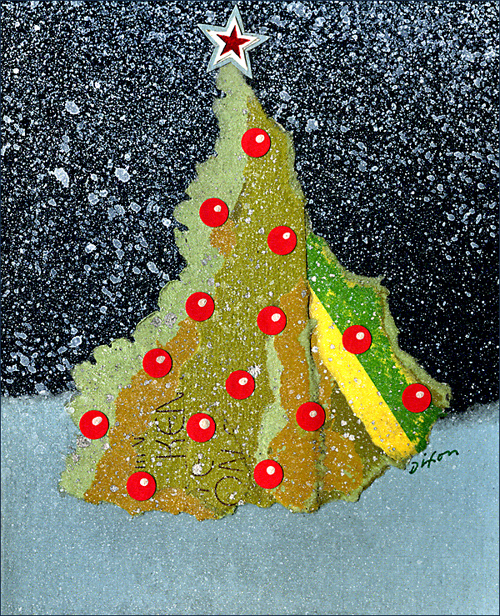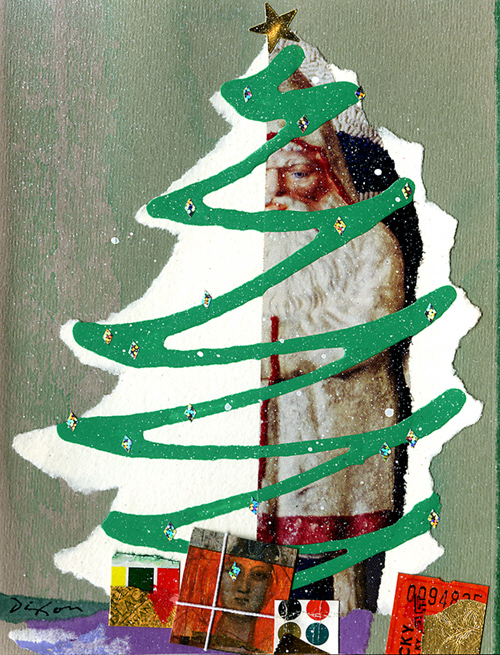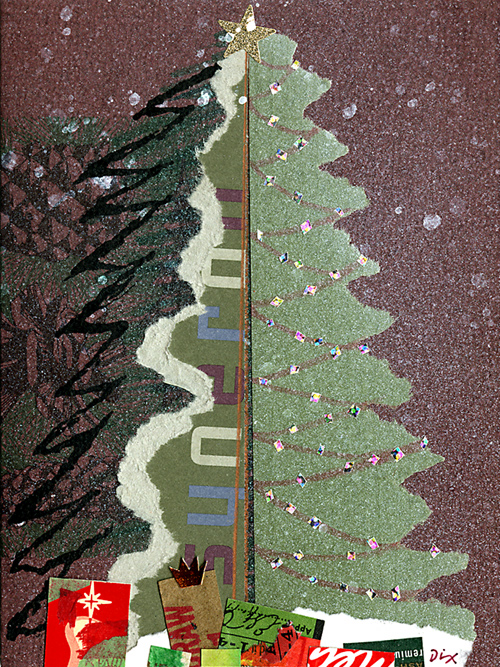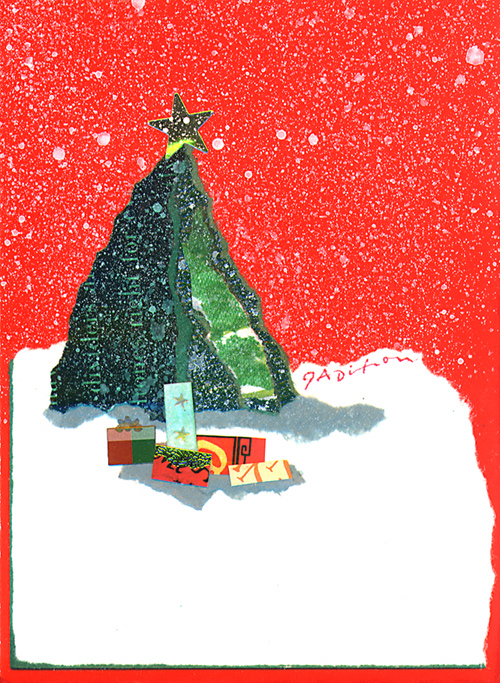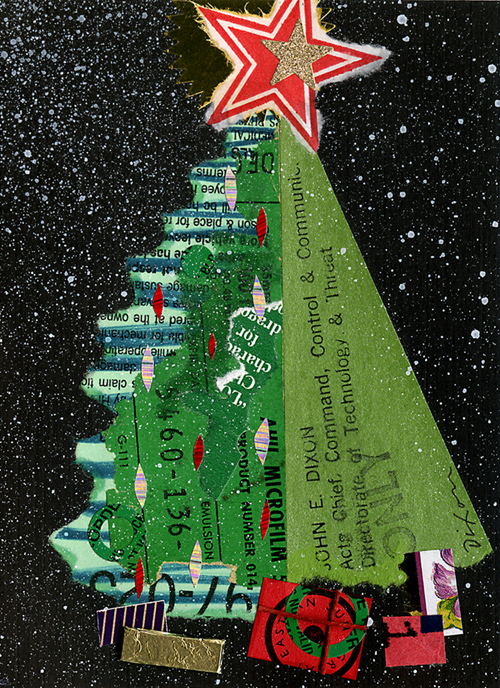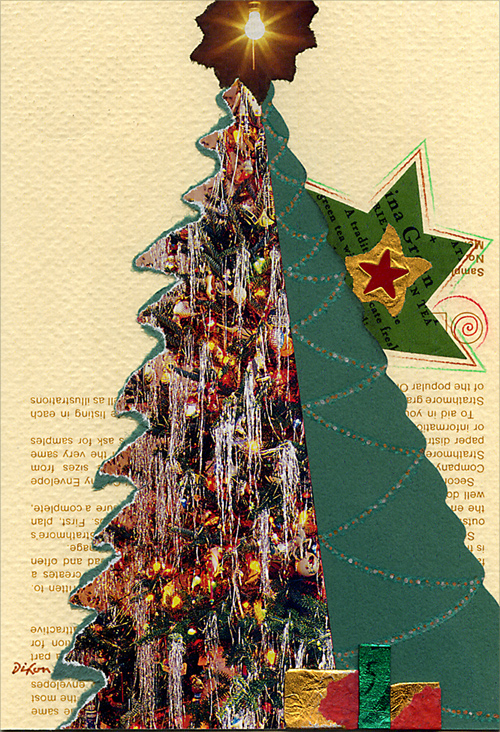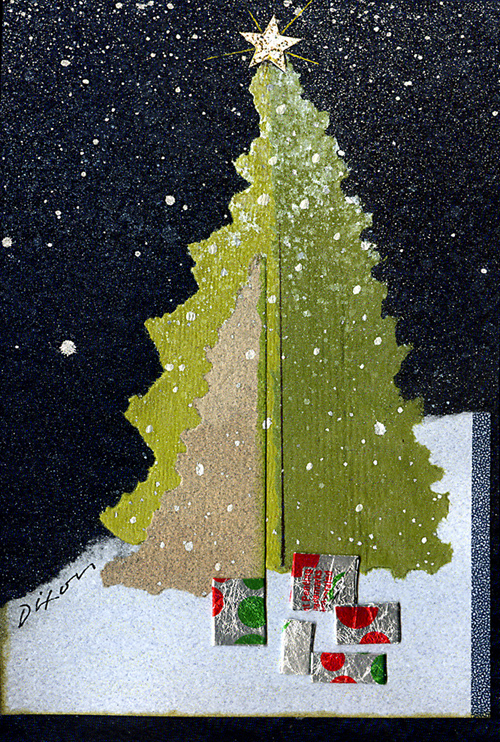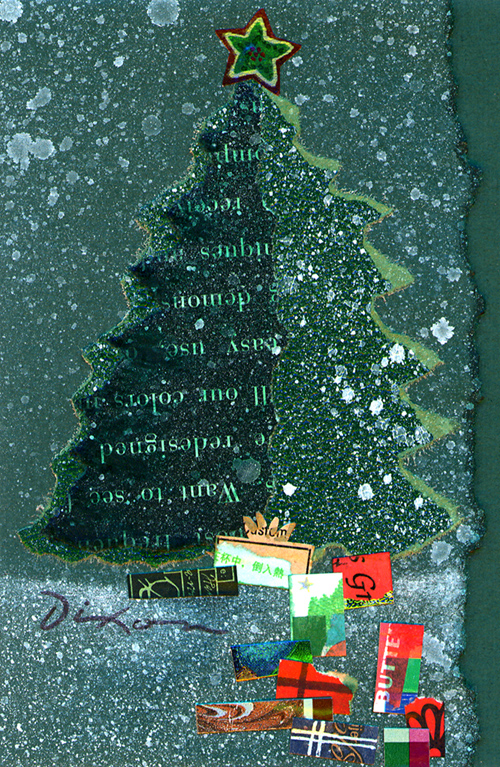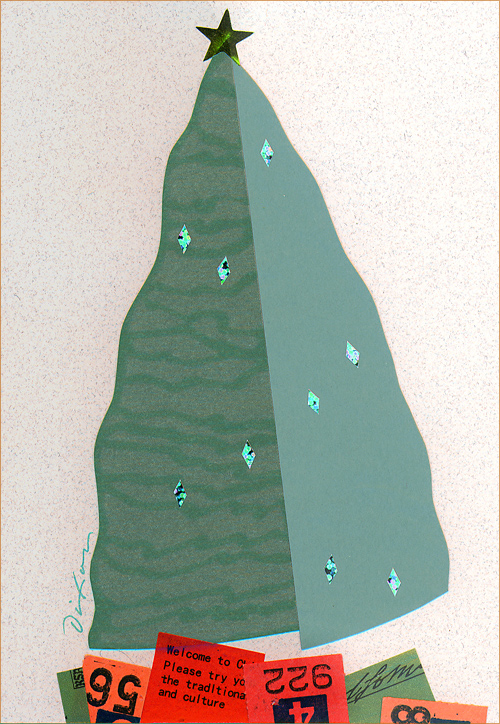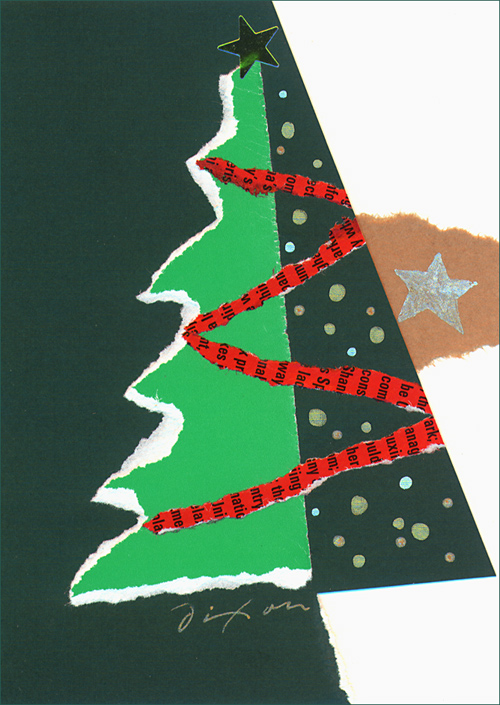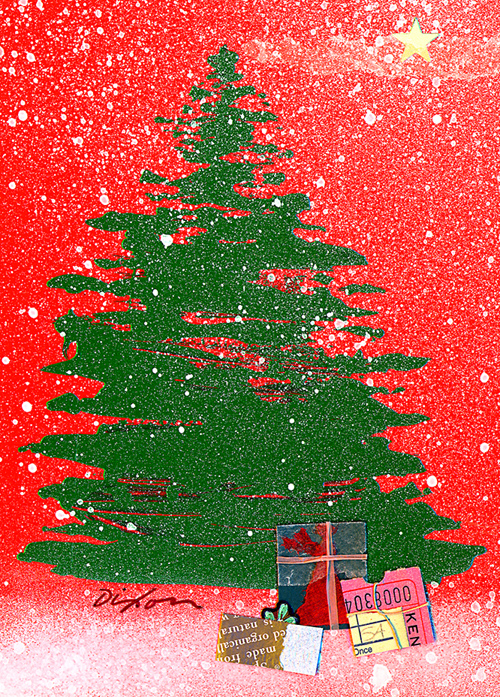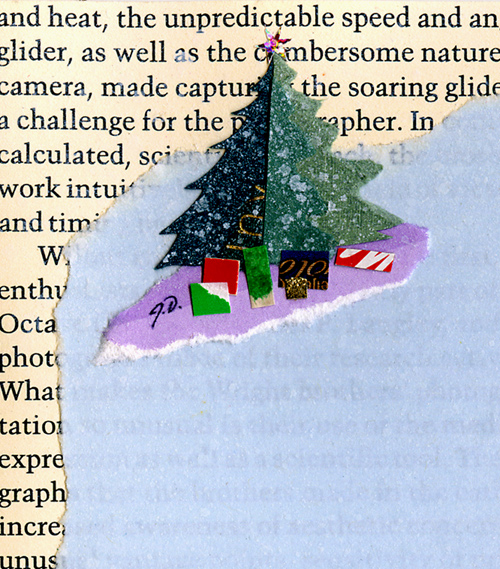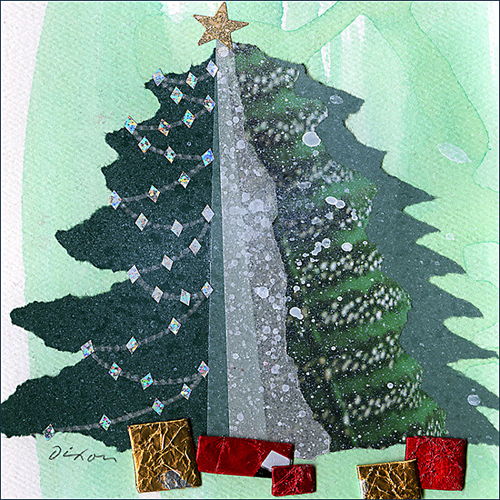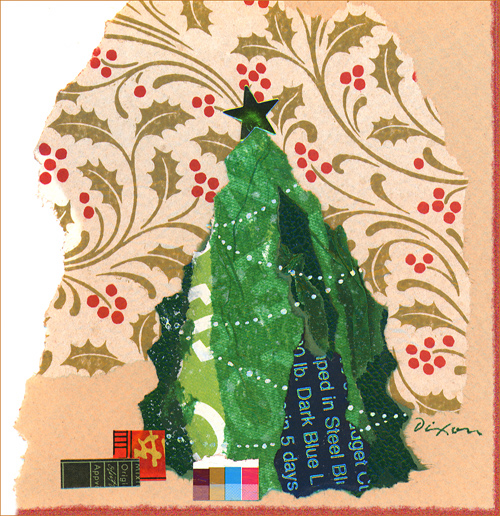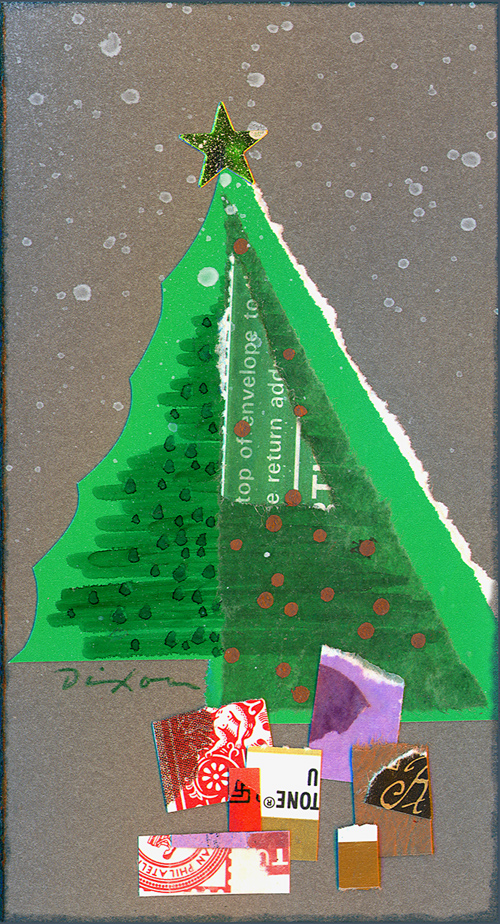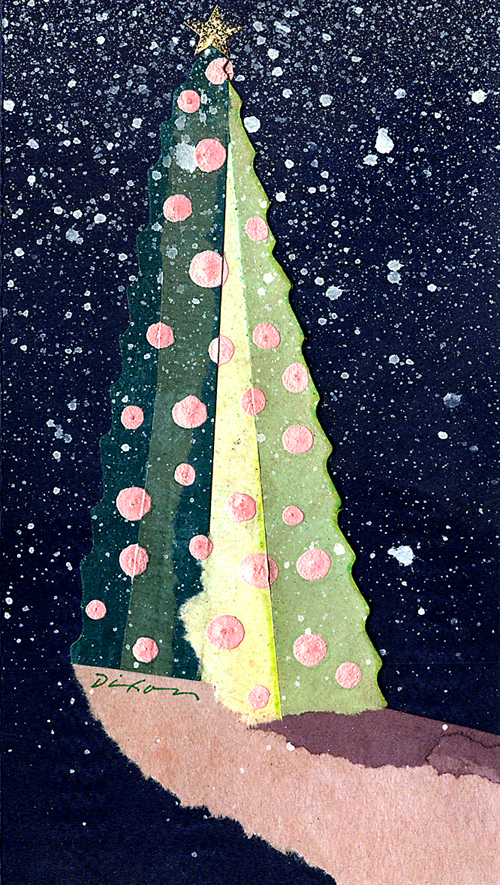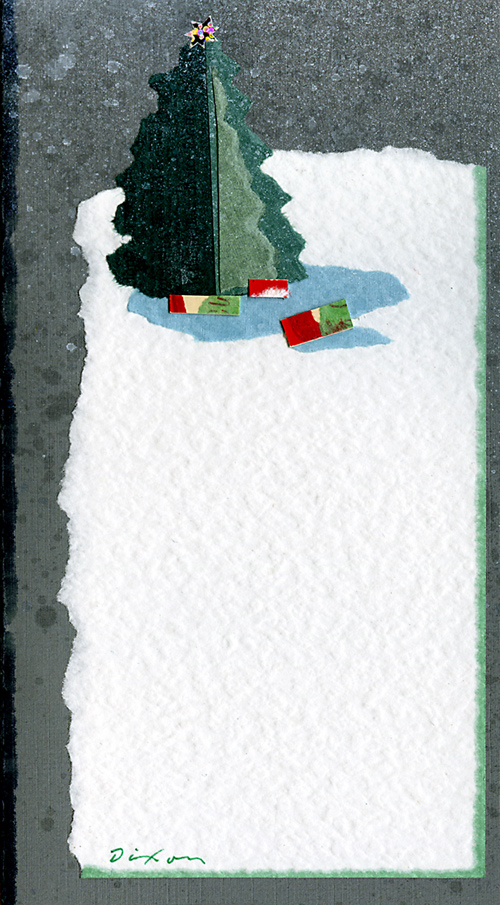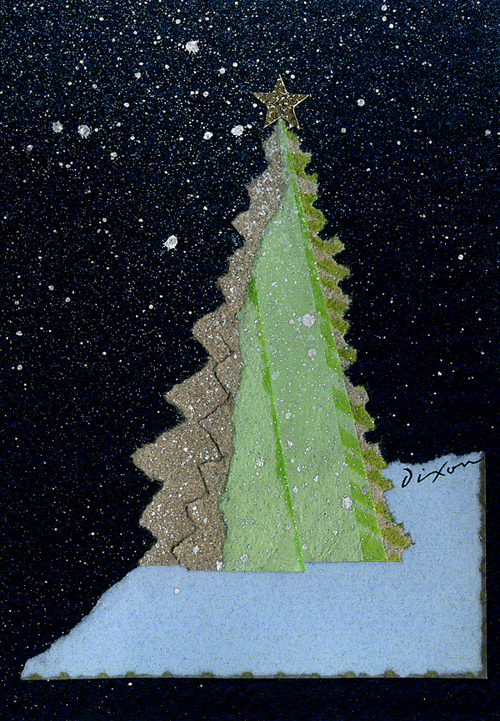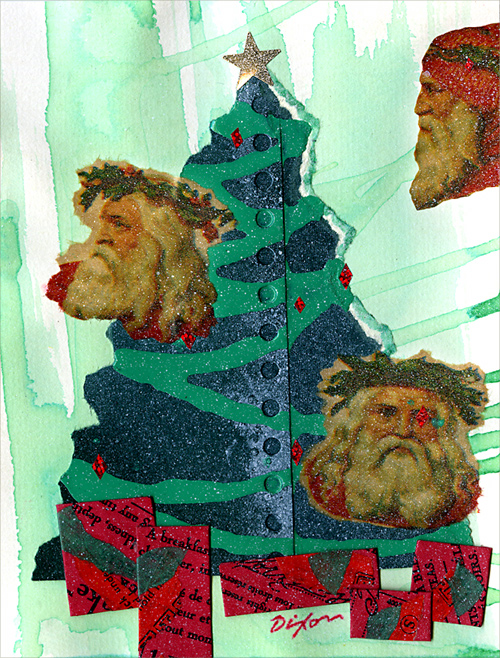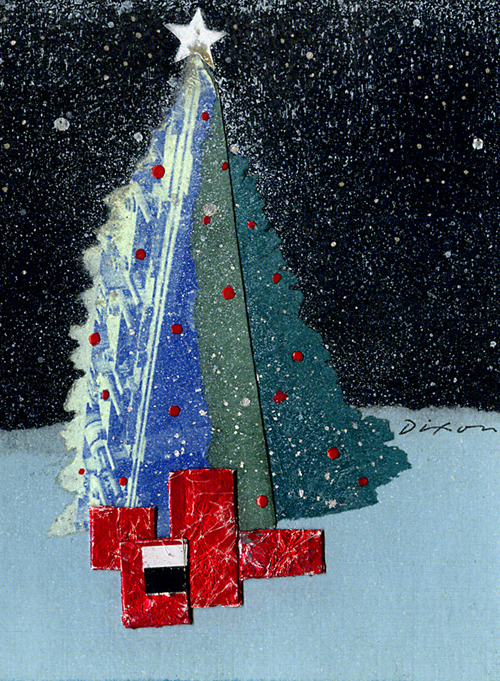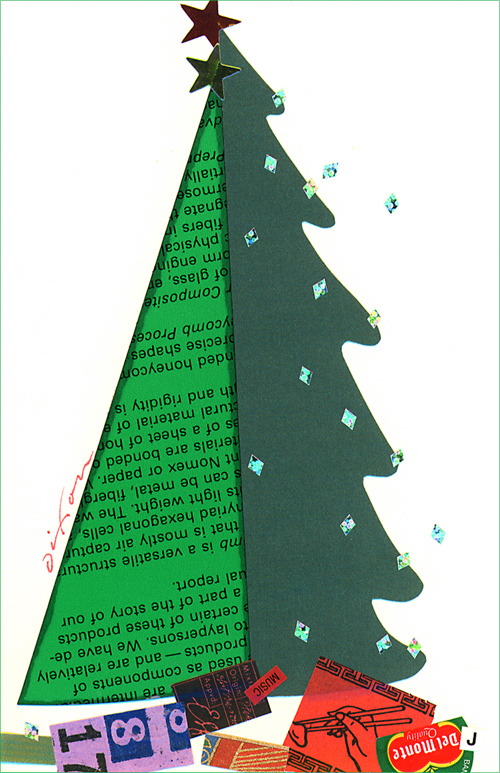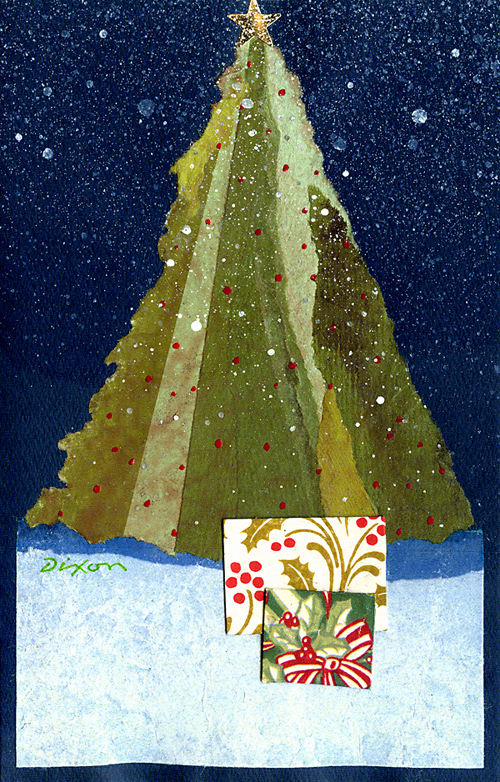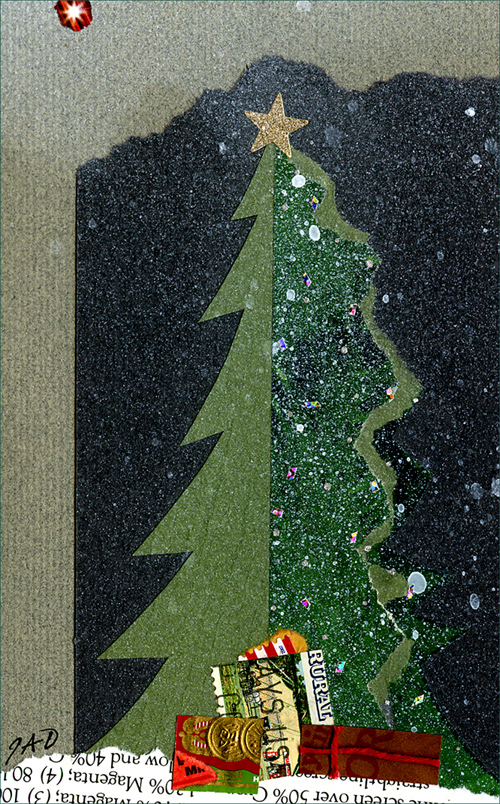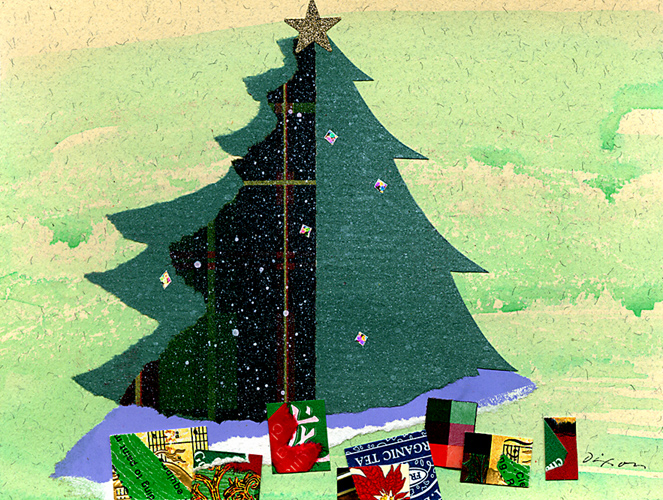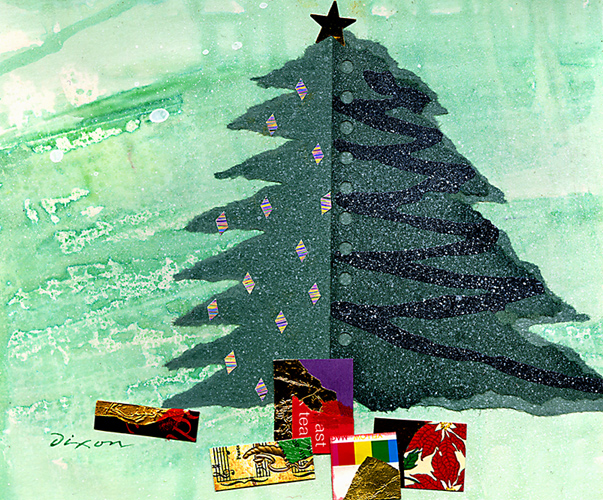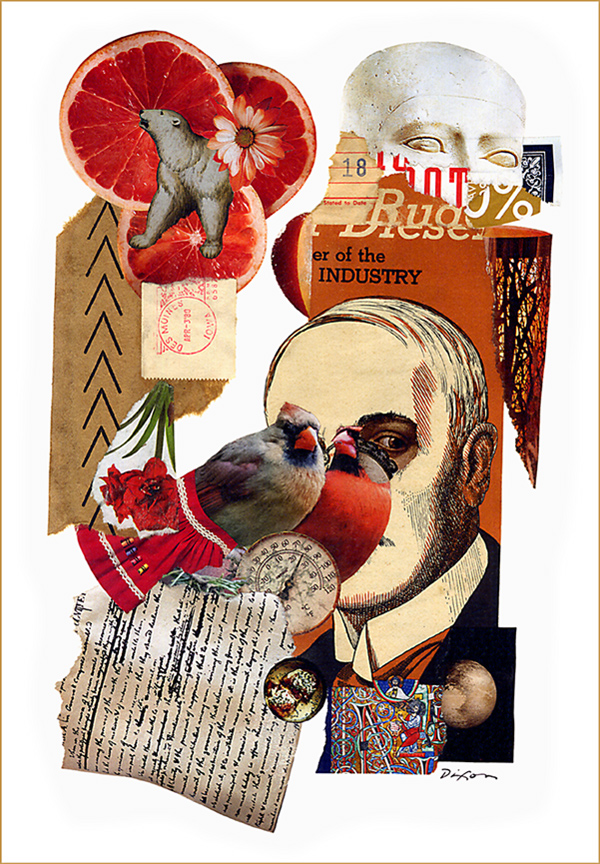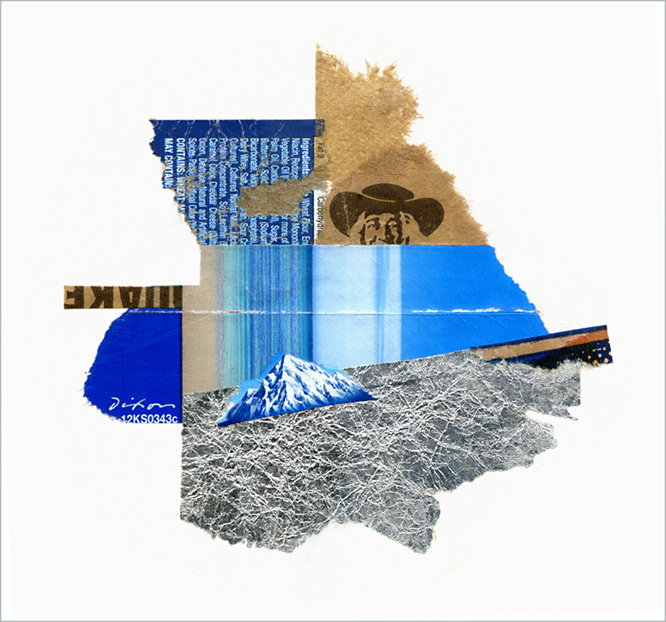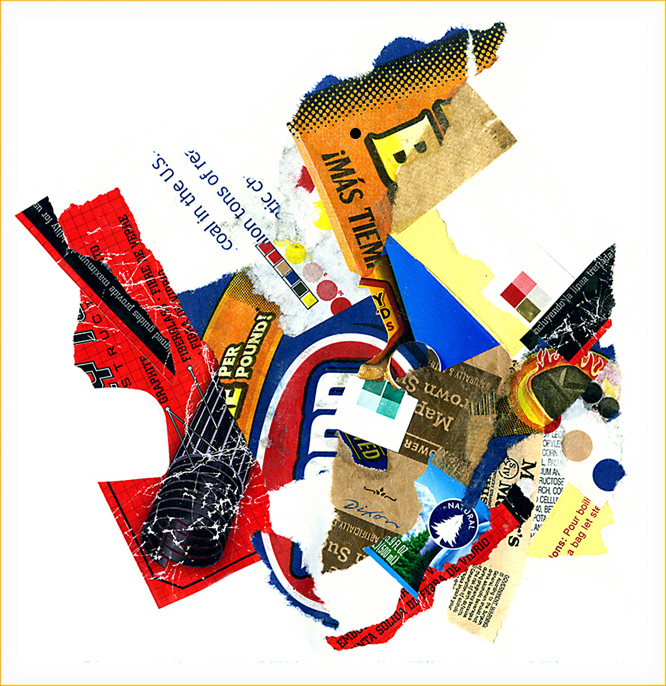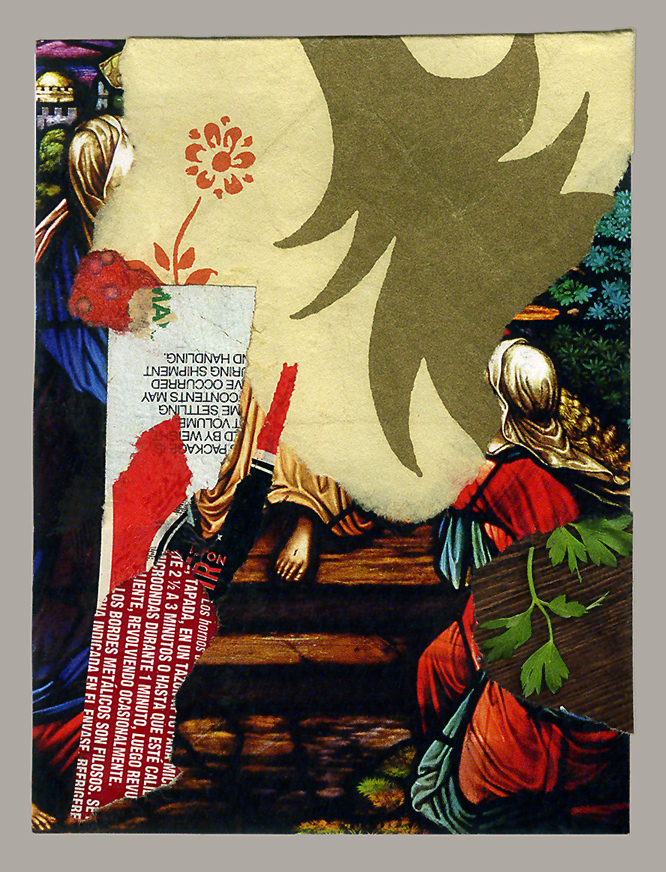“Try to understand, not only the nature of what you’re looking at, but your own perception and the judgments behind what you’re looking at.”
— Nicolas Uribe
Are you still as interested in this subject as I am, my dear reader? I hope so. Permit me to begin this entry with an update on my evolving ‘Plein Air Collage Kit.’ After two more productive “art-outs,” minor refinements are still taking place. Protective feet were added to the base, a better diversity of colored and printed papers were organized, and, since it isn’t necessary to take much adhesive on location, I downsized the glue bottles for a better fit.
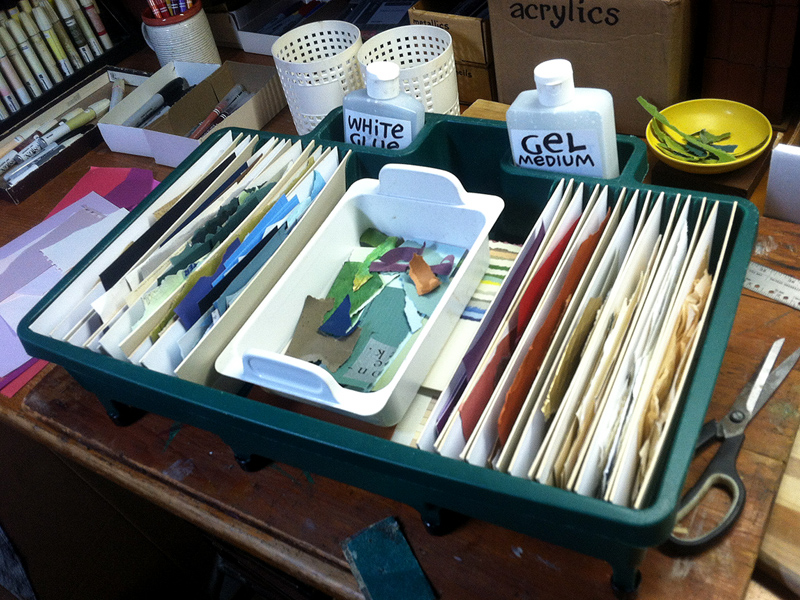
The PAACK group was welcomed to a home with lovely farmscapes in every direction. I picked a breezy spot to test my methodology and to capture one of our host’s flower gardens. I liked the sloping road and cornfield in the background and a central tree at its summer peak. 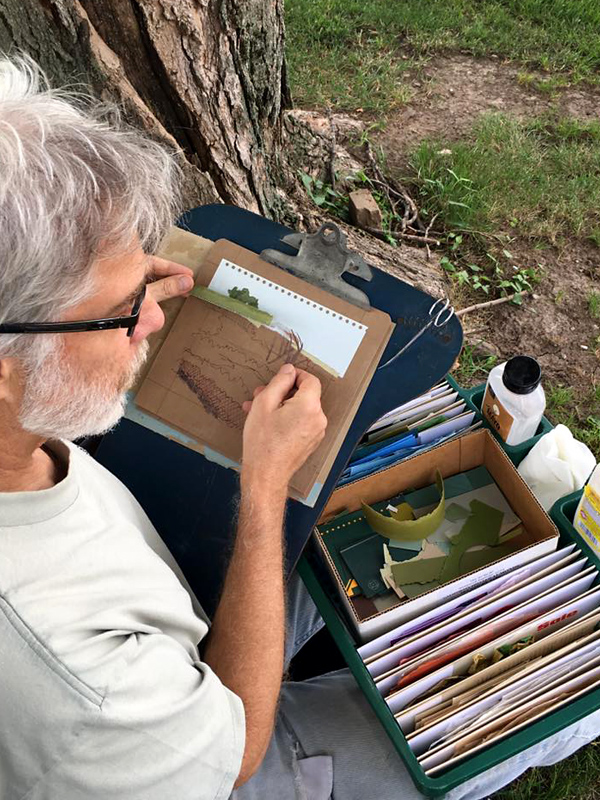 The composition was complex enough that I would push the limit of the 50/50 ratio of location-to-studio labor before it was finished. I wanted to do justice to the impatiens in the foreground. Although I intend to get back to some strictly on-site studies, I decided to create a companion piece with the same ratio on my next venture into the countryside.
The composition was complex enough that I would push the limit of the 50/50 ratio of location-to-studio labor before it was finished. I wanted to do justice to the impatiens in the foreground. Although I intend to get back to some strictly on-site studies, I decided to create a companion piece with the same ratio on my next venture into the countryside.
In my adopted area of the southern bluegrass region of Kentucky, there are many historic farm estates. Two of my favorites are Isaac Shelby’s Traveler’s Rest, which is partially accessible to the public, and pioneer surgeon Ephraim McDowell’s summer retreat named Cambus-Kenneth Farm, which is not. It was a rare treat for our group to be offered the opportunity to wander among the paddocks and historic structures of the serene Cambus-Kenneth on the last day of July.
It’s not as though I haven’t drawn or painted out of doors many times since youth, but the recent, more systematic approach has introduced me to aspects of the plein air discipline that are no doubt familiar to artists who have made the practice a ritual. Personally, I find that it is important to not spend too much time selecting a spot to sit, 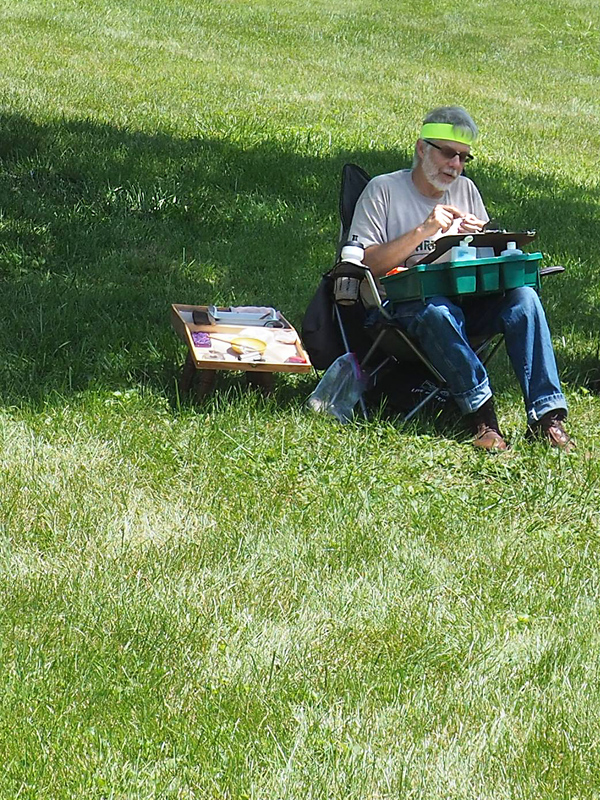 even though the entire enterprise rests upon the decision. It seems as though the act should be part of the overall intuitive process to which the day is pledged. It was tough to avoid squandering valuable minutes at Cambus-Kenneth, since there were barns, ponds, pastures, an impressive Italianate home, and many remarkably preserved 18th- and 19th-century brick outbuildings, including an icehouse, springhouse, and slave quarters. By using a viewing card with square “window,” I zeroed in on the old red-roofed quarters. I was able to complete enough of the design that day to stay within the 50/50 restriction when I finished the artwork in the studio a few days later. Folks, I may just be getting the hang of this gig. Please let me know what you think of the results.
even though the entire enterprise rests upon the decision. It seems as though the act should be part of the overall intuitive process to which the day is pledged. It was tough to avoid squandering valuable minutes at Cambus-Kenneth, since there were barns, ponds, pastures, an impressive Italianate home, and many remarkably preserved 18th- and 19th-century brick outbuildings, including an icehouse, springhouse, and slave quarters. By using a viewing card with square “window,” I zeroed in on the old red-roofed quarters. I was able to complete enough of the design that day to stay within the 50/50 restriction when I finished the artwork in the studio a few days later. Folks, I may just be getting the hang of this gig. Please let me know what you think of the results.
Here are the intermediate stages of two plein air miniatures, after completing
the on-location work. I start with my finding an appealing composition with a
viewing card, then roughly sketch the layout before picking a color scheme
from papers available in my kit. These artworks required studio time equal
to what I spent in the field — a total of approximately nine to ten hours each.
Garden of Alice
plein air collage miniature by J A Dixon
6.625 x 6.125 inches
• S O L D
Old Quarters
plein air collage miniature by J A Dixon
6.625 x 6.125 inches
• S O L D
